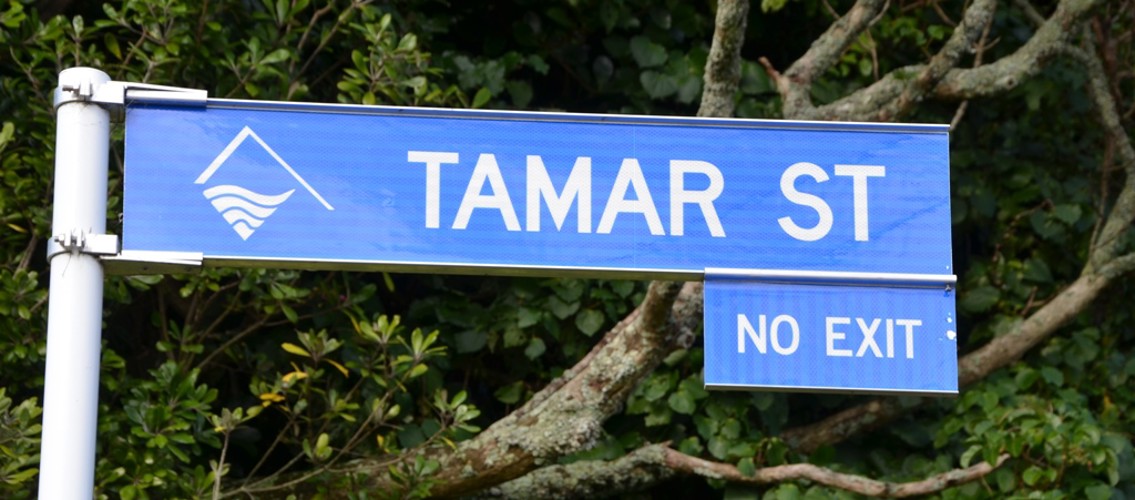 Tamar Street sign (2014). Mike Gooch. Word on the street image collection.
Tamar Street sign (2014). Mike Gooch. Word on the street image collection.
 Tamar Street sign (2014). Mike Gooch. Word on the street image collection.
Tamar Street sign (2014). Mike Gooch. Word on the street image collection.
When the first vessels of the Plymouth Company left England for New Plymouth, they would have sailed out of Plymouth Sound into the English Channel.
One of their last views of England would have been the estuary making up the Sound, which is largely formed by the river Tamar. They were in good company as a similar view had been afforded to Darwin and the crew of the Beagle in 1831 and the Pilgrims in 1620 on the Mayflower, as they left on their respective adventures.
The Tamar flows south from its source, just over five kilometres from the Bristol Channel, down to the south coast at Plymouth, effectively marking out the border between Devon and Cornwall.
It is rich in folklore; boasting that the mortal battle between King Arthur and Mordred took place on its banks. Some Cornish folk say that the devil would never dare to cross the Tamar for fear of becoming the filling for a Cornish pasty.
The name Tamar comes from legend also, referring to an underworld nymph who came to the mortal world. Two giants fell in love with her and she led them on a merry dance. Her father came to take her back and, in a rage, cast a spell on the giants putting them into a deep sleep. Tamar was upset and refused to return to the underworld, so he turned her into a spring that produced the river.
Today the Tamar estuary has huge international significance and is listed as a "Site of Special Scientific Interest", along with "European Special Area of Conservation" and an "Area of Outstanding Natural Beauty".
It is particularly famous for having rocky reefs of low salinity extending some distance inland that support a large number of species. In 1991 a section of the estuary was designated a nature reserve by the Cornwall Wildlife Trust especially noting its significant biodiversity and the extraordinary range of varying habitats.
This story was originally published in the Taranaki Daily News.
Please do not reproduce these images without permission from Puke Ariki.
Contact us for more information or you can order images online here.